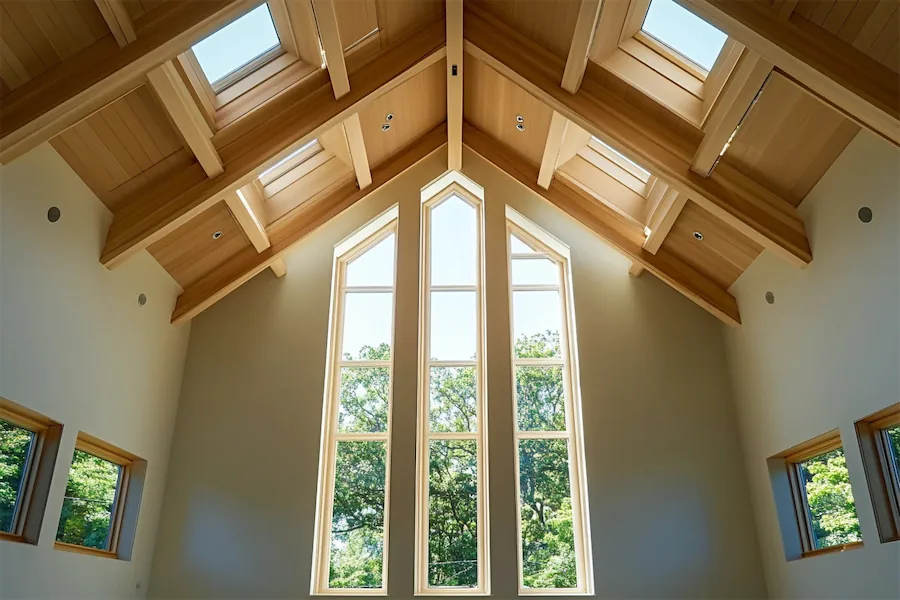A clerestory window roof is an architectural design that incorporates a high section of wall containing windows above eye level, situated between two sloping roof sections. This configuration allows natural light to penetrate deep into the interior spaces while maintaining privacy and wall space for other uses.
History and Origins of Clerestory Window Roofs
The use of clerestory windows dates back to ancient civilizations. In ancient Egypt, temples featured high stone slits to admit light into vast halls. The Romans further developed this concept in their basilicas, incorporating rows of windows above eye level to illuminate large interior spaces. This architectural feature was also prominent in Gothic cathedrals, where elevated windows allowed light to flood expansive naves.
Key Features of Clerestory Window Roofs
- Natural Illumination: Positioned high on walls, clerestory windows introduce abundant daylight into a building, reducing the need for artificial lighting and creating a bright, inviting atmosphere.
- Enhanced Ventilation: When operable, these windows facilitate effective cross-ventilation, improving indoor air quality and comfort.
- Architectural Aesthetics: Clerestory windows add visual interest and a sense of openness to spaces, often becoming focal points in modern design.
Applications of Clerestory Window Roofs
- Residential Buildings: Homeowners utilize clerestory windows to brighten living areas while preserving privacy, as their elevated position prevents direct sightlines from outside.
- Religious and Public Structures: Historically, churches and basilicas employed clerestory windows to illuminate large congregational spaces, a practice that continues in contemporary religious architecture.
- Commercial Spaces: Offices and retail environments incorporate clerestory windows to create well-lit interiors that enhance occupant well-being and reduce energy consumption.
Considerations When Choosing Clerestory Window Roofs
- Climate Suitability: In warmer climates, clerestory windows can contribute to overheating if not properly shaded or oriented. Conversely, in cooler climates, they can aid in passive solar heating when oriented towards the sun.
- Energy Efficiency: The type of glazing and window treatments selected impact thermal performance. Double-glazed or low-emissivity glass can enhance insulation, mitigating heat loss or gain.
- Maintenance: Due to their height, clerestory windows may be challenging to clean and maintain. Incorporating materials that resist dirt accumulation and considering access solutions during the design phase can alleviate maintenance concerns.
Conclusion
Clerestory window roofs blend historical significance with modern functionality, offering a means to enhance natural lighting, ventilation, and aesthetic appeal in various building types. When thoughtfully integrated, they contribute to energy efficiency and occupant comfort, making them a valuable consideration in architectural design.
